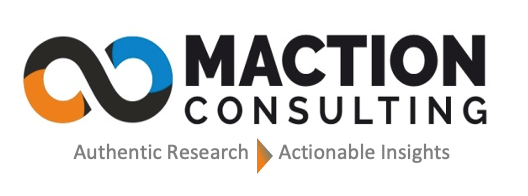The men’s grooming and skincare industry has undergone a remarkable transformation in recent years, evolving from a niche market to a booming sector driven by shifting consumer behaviors and societal trends. Once dominated by basic products like shaving cream and aftershave, the industry now encompasses a wide range of offerings, including facial cleansers, moisturizers, serums, and anti-aging products tailored specifically for men. Market research and data analytics have played a pivotal role in uncovering the growing need and demand for these products, revealing key insights into consumer preferences, market opportunities, and future trends.
The Rising Demand for Men’s Grooming Products
Market research indicates that the global men’s grooming market was valued at approximately USD 48.63 billion in 2024 and is projected to reach around USD 51.84 billion in 2025, with a compound annual growth rate (CAGR) expected to be around 6.6% from 2025 to 2033, according to recent industry reports. This impressive growth is fueled by increasing awareness among men about personal care, influenced by social media, celebrity endorsements, and changing cultural norms around masculinity. Data analytics has been instrumental in identifying these drivers, showing that younger age groups are exhibiting higher engagement with skincare products, with the 19-35 age segment dominating the men’s skincare market in 2024.
The rise of e-commerce and social media platforms like Instagram and TikTok has further amplified this trend. Analytics tools track consumer engagement with grooming content, revealing that tutorials and influencer-led campaigns resonate strongly with younger audiences. For instance, brands leveraging user-generated content (UGC) on platforms like TikTok and Instagram, showcasing hair and beard care routines, are seeing significant engagement, driving both visibility and sales. Online sales of men’s grooming products have witnessed rapid growth, with a reported 30% increase in recent years, transforming the shopping experience for male consumers.
Understanding Consumer Needs Through Data
Data analytics provides a granular view of consumer preferences, enabling brands to tailor products to specific needs. Studies show a growing consumer inclination toward natural and organic ingredients, with men increasingly opting for formulas free from harsh chemicals. This demand for “clean label” products has led companies to innovate, launching products emphasizing vegan, cruelty-free, and natural formulations. Furthermore, there is a significant preference for multifunctional products, such as combined moisturizer-sunscreen formulas, offering convenience for busy men.
Sentiment analysis of social media posts and online reviews further reveals that men value convenience and efficacy. Comments often highlight a preference for straightforward routines and products with visible results, such as reduced acne or improved skin texture. Brands leveraging this data have introduced subscription models and curated grooming kits, which are seeing continued demand as men seek tailored and hassle-free solutions for their grooming routines.
Regional and Cultural Insights
Market research also uncovers regional variations in demand. In Asia-Pacific, which accounted for a significant share of the global skincare market in 2024 and is expected to witness the fastest expansion, men prioritize skincare products with brightening and anti-pollution properties due to urban lifestyles and environmental concerns. This is also driven by a rising focus on maintaining a youthful appearance. In contrast, North American consumers, where the market is expected to register a CAGR of over 7% during the forecast period, focus on anti-aging and beard care products, driven by a cultural emphasis on rugged aesthetics and a high disposable income. Data analytics helps brands segment these markets, optimizing product development and marketing strategies to align with local preferences.
Challenges and Opportunities
Despite the growth, challenges remain. Some data indicates that the perception of skincare as a traditionally feminine activity can still be a barrier to adoption for a segment of men. Brands are countering this through targeted campaigns and by identifying and engaging male influencers who resonate with their audience, promoting inclusive self-care for men. Additionally, the rise of personalized skincare, powered by AI-driven analytics, is opening new opportunities. Companies are utilizing AI to analyze individual skin profiles, predict outcomes, and recommend real-time adjustments to skincare routines, boosting customer satisfaction through highly customized regimens.
The Future of Men’s Grooming
Looking ahead, data analytics will continue to shape the men’s grooming industry. Predictive models suggest that sustainability and inclusivity will drive future demand. Consumers are increasingly favoring eco-friendly packaging, with a significant majority (90%) more likely to purchase from brands with sustainable packaging in 2025. Over half of Millennials and Gen Z are consciously choosing products with sustainable packaging, and nearly 7 in 10 consumers expect brands to offer sustainable packaging by 2025. Brands that harness market research and analytics to innovate and address these evolving needs, focusing on clean, sustainable, and personalized solutions, will thrive in this dynamic market.
In conclusion, the men’s grooming and skincare industry is at a pivotal moment, with market research and data analytics illuminating the path forward. By understanding consumer needs, regional preferences, and emerging trends, brands can meet the growing demand and redefine masculinity in the modern era.


